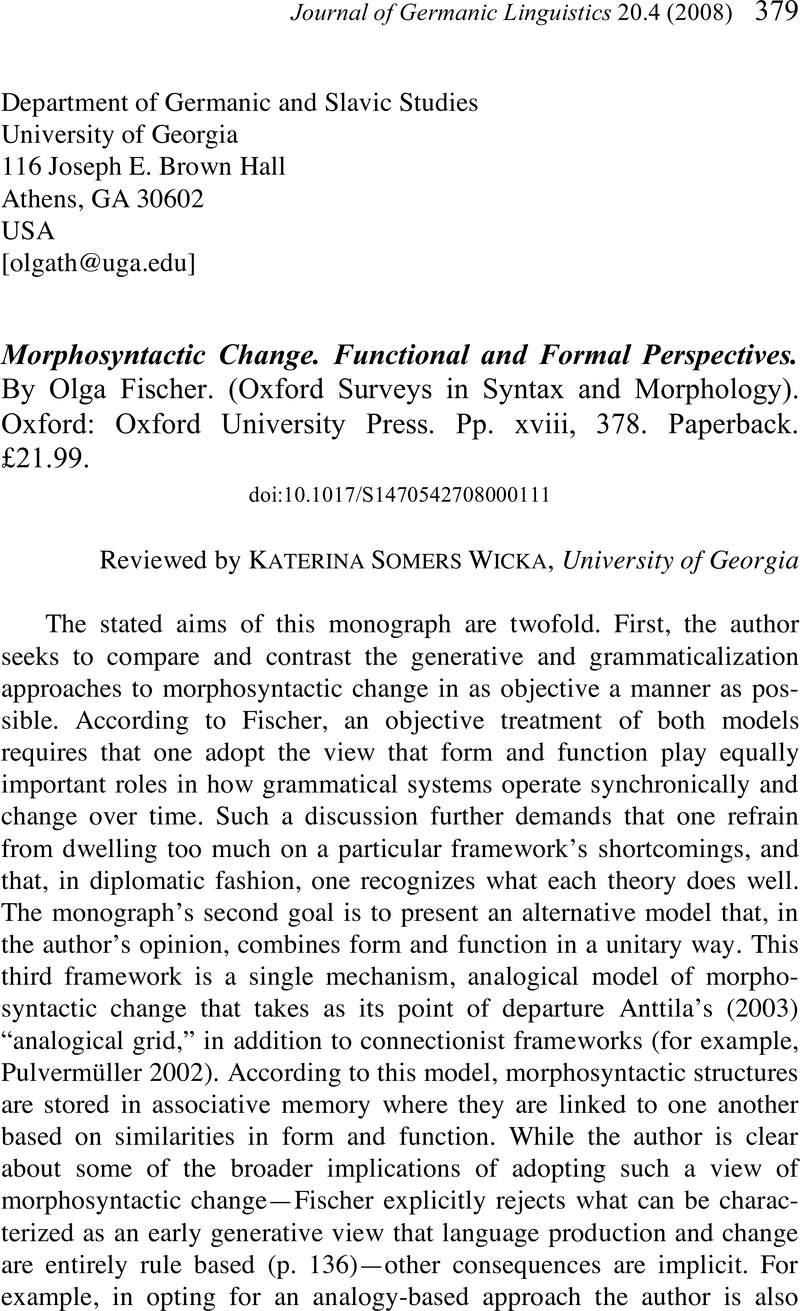Crossref Citations
This article has been cited by the following publications. This list is generated based on data provided by Crossref.
Petré, Peter
2015.
Review of Traugott & Trousdale (2013): Constructionalization and constructional changes.
Diachronica,
Vol. 32,
Issue. 2,
p.
284.



